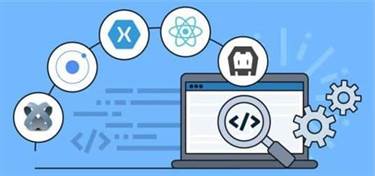This can help determine if a product needs additional development or if it’s ready to move on to further testing. Developers can identify coding errors by testing preliminary data before completing productivity and efficiency tests. You need to specify the conditions that indicate an inconclusive result, due to which it would become essential to conduct re-testing. You should know the conditions https://www.globalcloudteam.com/ for which you must interpret the output as indicative of abnormalities in the input test data, test procedures, or test data files or database. The final point is to note the permissible indications for the test’s results, status, control, and readiness to conduct the next test case or script. This is to be coupled with other pertinent criteria about the test case or script.

Non-technical people or resources besides software developers need help understanding these test specifications. The primary use of these developer-level test specifications is for future software developers to check the unit tests. This cloud-based platform lets you test web and mobile applications on over 3000+ real browsers and platform combinations. Furthermore, you can also perform geolocation testing and localization testing of your software applications across 50+ geographies. To get started with automation testing, visit LambdaTest documentation.
JS Reference
14 Chapters Automation Testing The quintessential guide to Automation Testing. This is an in-depth resource covering all aspects of testing. Some key characteristics of a good specification are clear, completeness, testability, repeatability, and more. This is a list of those persons who have reviewed the Test Case Specification and have approved the information in this document.
You can only test that the title props is used as value for the input, and that the callback function is correctly called when you trigger user interactions. But you cannot test a “full scenario” without rendering the parent component. Go to settings and then to the keyboard to change the layout. The next step requires selecting the correct language and layout.
Tutorials and References
For end-to-end tests, you must select high-level test specifications. If there are unit tests, you must select developer-level specifications. The testers assign the test specification identifiers to individual test specifications for their unique identification. Such specification identifiers enable uniquely identifying every test case and offer an overall view of the functionality to be tested by implementing the test case. For each unit that requires testing, the test specification is different.
In addition to an alternate assignment expression for a Test Input, it is often desirable to force a change in a variable after a period of time in a simulation. For example, you might want to force production to ramp down to 0 between time 10 and 12, but before time 10 just let production be what it would have been. This type of a change is useful both for writing complete reality Checks and for studying the response of a model to interesting Test Inputs.. Is exactly the same format equation you would normally use to define an auxiliary variable, and can involve only model variables. The equation you write is also restricted in that you cannot use dynamic functions , defining functions or user defined Macros. If you need this functionality, you can create extra model variables for use in your Test Inputs.
Using text inputs
The student can check the results to see what the expected output should be. We are selecting “match” for this test because we don’t want an exact match. Students can write their own welcome message, however, the full name “John Smith” must be part of the output string. We have created some skeleton code for the student to start from. In your test you only render the child component, and you mock the callback function. So you cannot expect the input value to change when triggering user interactions in your test.

The test passes if the test matches the expected output compiled as a regex. The student can then add their code to the main.py file with the skeleton code and run the test again to see if they passed. From the students’ perspective, they’ll have the skeleton code, and the README.md file with instructions to complete the project. We have already created the skeleton code and README.md file, so now we’ll create the test.
Providing a bigger hit area for your checkboxes
The apt level of the details is the level at which the details can specify the expected results and compare these expected results with the actual results. For each test input, you must mention the name, purpose, and description . This is to be followed by the source of the test input and the method you use to choose the test input. You have to indicate the type of the test input, that is, real or simulated.
- You must describe the features or items the test case or script will test.
- For example, if the problem states that an input will be an integer, you can rely on that–my code passed all correctness tests without any such checking.
- In this section, let’s explore the difference between test specification and test plan.
- You should specify the minimum and maximum permissible test duration regarding the count of events or time.
- Such specification identifiers enable uniquely identifying every test case and offer an overall view of the functionality to be tested by implementing the test case.
- Quality assurance testers test the applications from a user’s perspective, not from an internal perspective.
The primary use of these high-level test specifications is for project managers to confirm assurance and use in the future. The testing team develops the test specifications during the planning phase of software development. In software testing, the blueprint of the complete test design is termed test specification. Creating proper test specifications that expose application errors is a creative activity.
1.4 Pre-requisite Conditions:
By referring to the approach in the test plan, the team has to decide the feature that the team should test. Then, the team refines the gross approach in the test plan to develop particular test techniques for the testing unit and the criteria the team should employ to evaluate the unit. Using all this information, test input the team creates the test specifications. Checking the “passed” results now, you’ll see that the expected output only has the full name “John Smith”, whereas the actual output has a string with some other words in it. With match tests, this will pass because the expected output is present within the actual output.
The number of the test case or script indicates the level of the test case or script relative to the corresponding software level. This helps coordinate the software development and test versions concerning configuration management. Drafting the proper and accurate test specifications is a significant part of the Software Testing Life Cycle. The reason is that although the test cases are efficient, the team will not generate the expected outcome if the testers fail to comprehend them correctly. In this process, the testers can understand the test cases by reading the test specifications.
How to Create Test Data?
You have to note down all the inputs essential for the execution of the test case or script. While doing this task, you must remember the level for which the test case or script has been written. You should ascertain that you have included all essential inputs. You must include the context and the purpose of the software application or situation.
